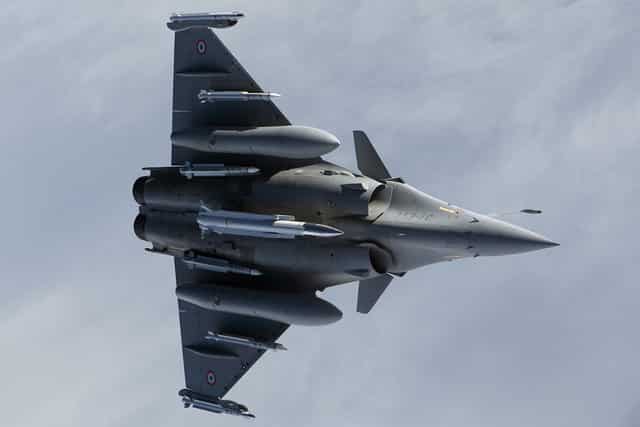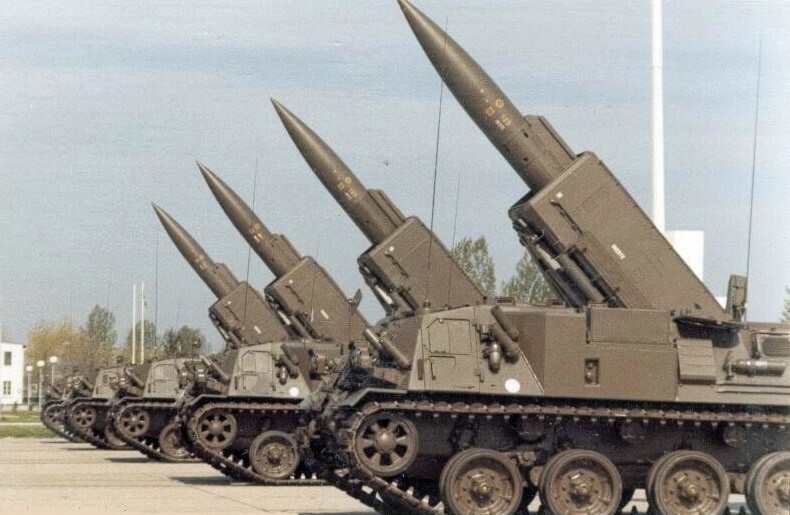During the Cold War, France, like the United States and the Soviet Union, had an expanded nuclear arsenal, relying both on ballistic missiles S2 in silos on the plateau of the Albion in the foothills of the Alps, nuclear-powered ballistic missile submarines armed with MSBS ballistic missiles, several models of bombers ranging from the Mirage IV for strategic strikes to the Jaguar and Super Etendard for tactical strikes, and later replaced by the Mirage 2000 and the ASMP supersonic cruise missile, as well as tactical ballistic missiles, first the Pluton system with a range of 120 km armed with a 25 kt tactical nuclear warhead, replaced in 1993 by the system Much more capable Hades, mounted on a wheeled trailer erector transporter for high mobility, and with significantly increased performance with a semi-ballistic trajectory, evasive maneuvering capabilities making it difficult to intercept, u range of almost 500 km, increased accuracy and a TN90 nuclear charge of 80 kt.
If these tactical Baltic systems found their operational justifications to counter a possible concentration of Soviet armor before carrying out a counter-offensive, and if the Soviet Union also had equivalent systems like missiles like the 9M79 Toschka, the Pluto, and later the Hades, were particularly unpopular with German authorities, the range of the systems making their use likely to and from German soil. Pressure from Berlin on the one hand, and the "disappearance" of the threat on the other after the collapse of the Soviet bloc, led the French authorities to withdraw from service in 1996 the Hades systems like the silos and S2 missiles on the plateau of the Albion, to only rely on a two-component deterrent, an aerial component based on the Mirage 2000N -ASMP pair (subsequently replaced by the Rafale/ASMP-A), and the submarine component based on the new class of nuclear ballistic missile submarine "the Triomphant", and on the new strategic naval ballistic missile, the M48, both much more efficient than the Le Redoutable-MSBS couple that they replaced.

If Paris, like Washington, abandoned tactical Baltic missiles during the 90s, preferring to rely on cruise missiles such as the American Tomahawk and the French Scalp/MdCN, this was however not the case for other armies, such as the Russians who developed the 9K720 Iskander system with characteristics very close to those of Hades, but also from China (DF-21, DF-17), North Korea (KN-23) ou from Iran (Fateh-110, Shahab 2..). Most of these systems, apart from the Iranian models, are armed with a tactical nuclear charge or a conventional charge, offering their holders deep strike capabilities much faster and more difficult to counter than those offered by cruise missiles and combat aircraft, while expanding their deterrent options. In this context, wouldn't France have every interest, like the United States, in acquiring this type of capability again within the framework of thea new Military Programming Law 2023 currently being designed ?

75% of this article remains to read,
Subscribe to access it!
The Classic subscriptions provide access to
articles in their full version, and without advertising,
from 6,90 €.
Newsletter subscription
Register for the Meta-Defense Newsletter to receive the
latest fashion articles daily or weekly


[…] […]
[…] to rely on ballistic strike or cruise missile capabilities, the subject having been covered in part in a previous article. However, this solution is expensive and unsuitable for long-term military actions, […]
[…] to meet these immediate needs, the latter should in no way overlook the development of its own tactical ballistic capabilities, including those arming a possible long-range rocket launcher system of […]